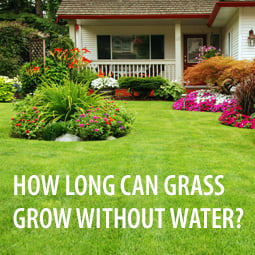 The prolonged California drought that has been looming over the state for the last few years, has finally started to take a noticeable toll on the residents of the state. Both man and beast are feeling the effects, and many are losing the very world in which they live. The exceedingly dry winter of 2014/2015 will continue to have ramifications for several months, even years to come. Check out our eco friendly lawn options.
The prolonged California drought that has been looming over the state for the last few years, has finally started to take a noticeable toll on the residents of the state. Both man and beast are feeling the effects, and many are losing the very world in which they live. The exceedingly dry winter of 2014/2015 will continue to have ramifications for several months, even years to come. Check out our eco friendly lawn options.
What Does A Dry Winter Mean For California?
The fall and winter months are when the aquifers located deep below the grounds' surface begin to be replenished with water from summer rains and winter snows. Because of the extreme drought conditions of the fall and winter months, there was little hope for a moist spring. Rice farmers in California were faced with leaving the majority of their fields fallow for the 2015 planting season. As California drought conditions continued to worsen, crop production had already dropped to close to 25 percent in 2014 and there was little hope for a brighter 2015.
With almost a third of the state experiencing exceptionally dry conditions, California's government has went so far as to enact laws that would fine home and business owner's $500 per day if they are caught using water unnecessarily. Tickets will be written each time a person violates the state mandated water restrictions that were put in place during California drought conditions. A few of the activities that are prohibited include, but are not limited to:
-
Watering the lawn
-
Washing cars or other vehicles
-
Sprinkler systems
-
Filling swimming pools
-
Power washing buildings and sidewalks
While a few of these activities are allowed under exceptional circumstances, continued violation of the state's mandatory water policies could result in jail time and heavier fines.
The Drought's Effects On Lakes and Rivers
With minimal amounts of rain and snowfall, the water that normally would run down the mountains and into the hills and valleys is no longer available. The lack of precipitation is resulting in no water being collected by lakes, rivers, ponds and streams. With no way to be replenished, the bodies of water that were once so plentiful with game, have now begun to dry up. As ponds and lakes become smaller and creeks, rivers and streams cease to flow, the wildlife that once called the home is beginning to perish.
The longer the California drought conditions continue, the more devastating the impact on the state's wildlife population. At one point in the summer of 2014, meteorologists predicted a one in three chance that El Nino like conditions would develop during the winter months. As time passed, the chances of it actually occurring went from slim to none. As the winter months, progressed, the message was quite clear that both the state's wildlife and farming communities would take a direct hit. With each passing month, the conditions that affect both are continuing to worsen with no relief in sight.
As time continues to pass, the state legislature is looking into more options to help conserve what water is left and reduce the effect of the California drought on the state. From improving water sheds to implementing new water conservation tiers that would have a dramatic impact on residential areas and the amount of water they would be allowed to use during severe California drought conditions. The state also curtailed the water rights of several senior holders in the Sacramento area. The curtailment mandate requires all water rights holders to stop diverting water away from public areas. Changes are also being made that would reform how the Wildlife System is funded throughout the state. All of these changes to existing legislation are designed to prevent water loss, encourage water conservation on all levels from residential to commercial. The overall goal is to prevent any permanent damage to the state's other vital, natural resources.











